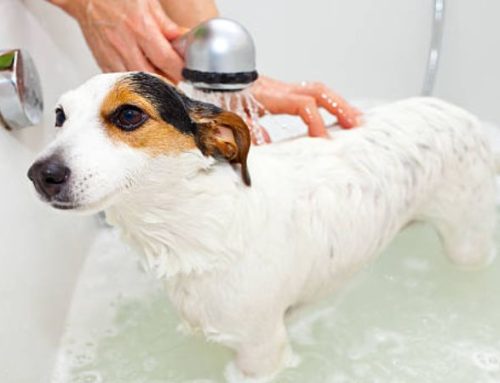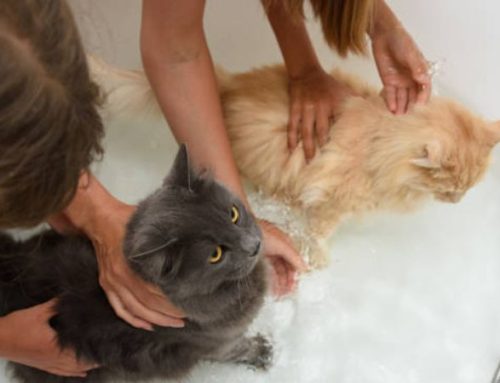Diarrhea is one of those unpleasant surprises every dog owner faces sooner or later. One moment your pup is zooming happily around the house, and the next… you’re grabbing paper towels and wondering what went wrong.
The good news? Many cases of sudden digestive trouble can be soothed quickly with safe, simple steps right at home. Below, Nexus Pets will guide you through how to stop dog diarrhea fast including the best home remedies, helpful OTC options, and expert-approved tips so your furry friend can get back to wagging instead of worrying.
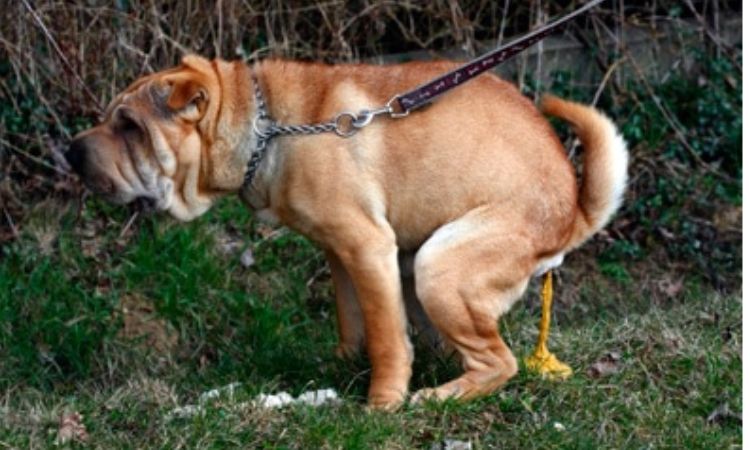
When to Stop Reading and Call Your Vet (Critical Safety)
Before attempting any home remedies for dog diarrhea, it’s crucial to understand when immediate veterinary care is necessary. While mild diarrhea in healthy adult dogs can sometimes resolve on its own, certain signs indicate a potentially serious condition that requires urgent attention.
Red Flags That Require an Immediate Vet Visit:
- Blood in the stool, including bright red or black/tarry stools
- Repeated vomiting or vomiting blood
- Severe lethargy or collapse
- Refusal to drink water, which increases risk of dehydration
- Signs of pain or distress, such as whining, hunching, or restlessness
- Concurrent vomiting and diarrhea
- High fever
- Diarrhea lasting more than 24–48 hours
- Suspected ingestion of toxins, foreign objects, or spoiled food
- Puppies, elderly dogs, or pets with chronic health conditions are at higher risk and should be evaluated immediately
These symptoms can indicate dehydration, infection, intestinal obstruction, gastrointestinal bleeding, or systemic illnesses that require rapid intervention. Prompt veterinary evaluation can prevent complications and ensure a safer, faster recovery.
The 24-Hour Rule
For healthy adult dogs with mild, acute diarrhea who remain alert, active, and are drinking water normally, it’s generally safe to monitor them at home for 12–24 hours. During this period:
- Keep a close eye on stool consistency, appetite, hydration, and behavior
- Document any changes in symptoms, frequency of diarrhea, or signs of worsening
- Be ready to escalate care immediately if red flags appear
Most mild cases caused by dietary indiscretion, stress, or minor intestinal upset will show improvement within this timeframe. However, if diarrhea persists beyond 24 hours or worsens, a veterinary evaluation is necessary to rule out infections, parasites, or other underlying conditions.
The Core Rule: Withhold Food (For How Long?)
One of the most effective initial steps in managing mild diarrhea is temporarily withholding food, a practice often referred to as a short-term fast.
Why Fasting Helps:
- Allows the gastrointestinal tract to rest and heal
- Reduces ongoing irritation or inflammation in the intestines
- Gives the gut time to normalize stool consistency
Recommended Guidelines:
- 12–24 hours for healthy adult dogs
- Ensure unlimited access to fresh, clean water at all times to prevent dehydration
- Do not fast puppies, elderly dogs, underweight dogs, or dogs with pre-existing medical conditions
After the fasting period, food should be gradually reintroduced with a bland diet, such as boiled chicken, turkey, or lean protein combined with white rice, in small, frequent meals. This supports digestion without overloading the gut.
Expert Tip: Even during a fast, never withhold water. Hydration is critical because diarrhea increases fluid loss, which can lead to electrolyte imbalances, kidney strain, and more serious complications if left unchecked.
Vet-Approved Dog Diarrhea Home Remedies US: The Bland Diet
When your dog experiences mild diarrhea, a bland diet is one of the most effective and non-medication remedies. It provides the gut with a chance to rest, reduces irritation, and helps firm up loose stools. Veterinarians widely recommend this approach as the first line of home treatment for otherwise healthy dogs with short-term digestive upset.
Option 1: White Rice & Boiled Chicken (The Gold Standard)
Instructions:
- Use a ratio of 2 parts rice to 1 part lean protein.
- Boil skinless, fat-free chicken or turkey—do not roast, fry, or add any seasoning, oil, or butter.
- Serve small portions at first, gradually increasing if your dog tolerates it well.
- Adult dogs: feed for up to 5–7 days. Puppies: feed for 2–3 days only.
Why It Works:
- Easily digestible: Gentle on the stomach and intestines.
- Binding effect: Helps firm up loose stools naturally.
- Low in fat: Reduces the risk of pancreatitis and further digestive upset.
Option 2: Pumpkin (Pureed, Not Pie Filling!)
Instructions:
- Serve plain canned pumpkin or freshly cooked pumpkin, with no added sugar, spices, or pumpkin pie filling.
- Dosage based on dog size:
- Small dogs: 1 teaspoon
- Medium dogs: 1–2 tablespoons
- Large dogs: 2–3 tablespoons
- Mix into the bland diet or offer alone as a supplement.
Why It Works:
- Soluble fiber absorbs excess water in the intestines.
- Helps regulate bowel movements and reduce diarrhea duration.
- Acts as a mild prebiotic, supporting healthy gut bacteria.
Option 3: Probiotics / Yogurt
Instructions:
- Use dog-specific probiotics according to the label instructions, or plain yogurt with live cultures in small amounts.
- Introduce gradually to avoid further digestive upset.
Why It Works:
- Replaces beneficial gut bacteria that may be lost during diarrhea.
- Supports digestive balance and overall gut health.
- Can help reduce the severity and recurrence of mild diarrhea when combined with a bland diet.
Additional Tips for Success:
- Always provide fresh, clean water; dehydration is a primary risk during diarrhea.
- Monitor for red flags such as blood in the stool, repeated vomiting, lethargy, fever, or collapse. If any occur, contact your veterinarian immediately.
- Gradually transition your dog back to their regular diet once stools normalize.
- Avoid human medications like Pepto-Bismol or Imodium unless explicitly approved by a veterinarian.
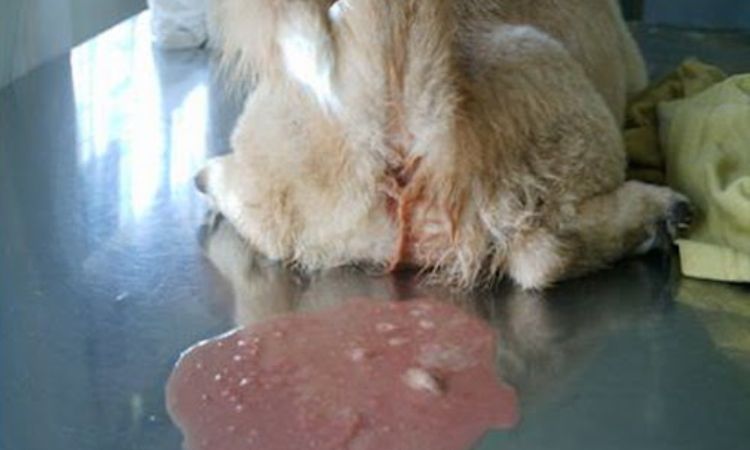
What Can I Give My Dog for Diarrhea OTC? Safe Medications & Dosages
Kaopectate (Bismuth Subsalicylate)
Expert Tip: Kaopectate contains the same active ingredient as Pepto-Bismol—bismuth subsalicylate. While it can help soothe mild diarrhea, Pepto-Bismol is often not recommended due to potential salicylate toxicity, especially in small dogs and cats. Veterinary-specific formulations of Kaopectate or Pepto-Bismol are safer and dosed appropriately for canine use.
Why it works: Bismuth subsalicylate has mild anti-inflammatory and antimicrobial properties. It coats the gastrointestinal tract and can reduce fluid loss, helping normalize stool consistency.
Important Notes:
- Only use the veterinary-recommended dosage.
- Avoid in dogs who are on other salicylate medications or have bleeding disorders.
- Monitor your dog closely for any adverse reactions.
Imodium (Loperamide)
Instructions: Loperamide can slow gut motility and relieve diarrhea, but it should only be given under veterinary supervision. This is especially important for herding breeds such as Collies, Australian Shepherds, and Shetland Sheepdogs, which may carry the MDR1 gene that increases drug sensitivity and toxicity risk.
Why it works: Imodium decreases intestinal contractions, giving the gut more time to absorb fluids and nutrients, which can improve stool consistency.
Safety Notes:
- Do not use if your dog has eaten toxins, spoiled food, or has certain parasitic infections, as slowing gut transit could worsen the condition.
- Monitor for lethargy, vomiting, or neurological symptoms; if these appear, contact your veterinarian immediately.
Binding Agents (Kaolin/Pectin)
Many veterinary-specific OTC diarrhea remedies use binding agents like kaolin and pectin. These ingredients work by:
- Absorbing excess water in the intestines
- Coating the gut lining to reduce irritation
- Helping firm up loose stool
Why it works: Unlike human medications, these ingredients are formulated specifically for dogs, making them safer and more effective for home use.
Usage Tips:
- Follow the dosage instructions on veterinary formulations.
- These products are generally safer for long-term or repeated use compared to human OTC anti-diarrheals.
- Combine with a bland diet (boiled chicken and rice) for optimal results in mild diarrhea cases.
When considering what can I give my dog for diarrhea OTC, remember that veterinary guidance is key. OTC medications like Kaopectate, Imodium, and binding agents can be helpful if used correctly, but the safest and most effective treatment always starts with a veterinarian, especially if diarrhea persists, contains blood, or is accompanied by vomiting, fever, or lethargy.
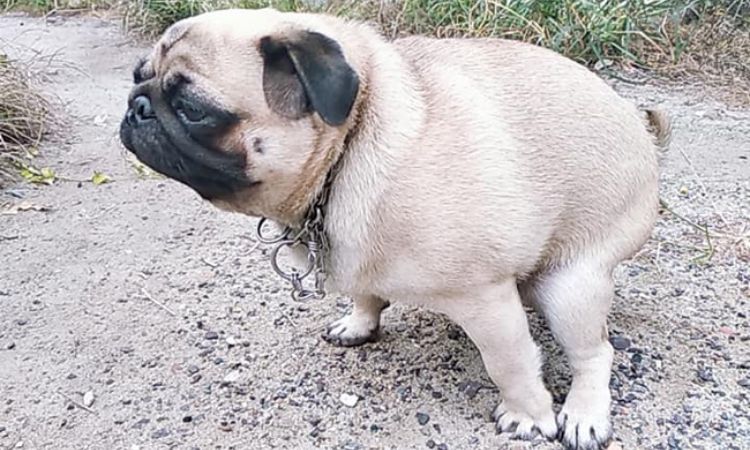
When & How to Reintroduce Regular Food
The Gradual Switch
Step 1: Start Slowly
- Begin by mixing 75% bland diet and 25% regular food for the first meal.
- Monitor your dog’s stool and overall behavior over the next 12–24 hours.
Step 2: Increase Regular Food Gradually
- If stools remain firm and your dog shows no signs of digestive upset, increase to 50% bland diet and 50% regular food for the next day.
- Continue monitoring for any recurrence of loose stools, vomiting, or discomfort.
Step 3: Further Transition
- The following day, shift to 25% bland diet and 75% regular food.
- By the fourth day, most dogs can be back on 100% of their regular diet.
Tips for a Smooth Transition:
- Feed smaller, more frequent meals during the reintroduction phase to reduce stress on the digestive system.
- Avoid introducing treats, table scraps, or new foods until the transition is complete.
- Continue to provide fresh water at all times to maintain hydration.
Future Prevention
To help prevent future episodes of diarrhea, consider the following common causes and precautions:
- Dietary Indiscretion: Avoid sudden changes in diet, feeding spoiled or human food, and ensure proper portion control.
- Stress or Anxiety: Keep feeding routines consistent, provide a calm environment, and minimize sudden changes in the dog’s surroundings.
- Food Changes: Introduce any new food gradually over 5–7 days, mixing increasing amounts with the current diet.
- Parasites & Infections: Maintain regular deworming, vaccinations, and hygiene to prevent gastrointestinal upset.
- Environmental Hazards: Prevent access to garbage, toxic plants, or foreign objects that can upset digestion.
By following a gradual food reintroduction schedule and addressing potential triggers, you can minimize the risk of recurrence and help your dog maintain a healthy digestive system.
Helping your dog recover from diarrhea isn’t just about stopping loose stools—it’s about restoring comfort, balance, and confidence in their health. By combining gentle home remedies, careful dietary adjustments, and safe, vet-approved medications, you can soothe your dog’s digestive upset while staying vigilant for warning signs. Attentive monitoring, gradual reintroduction of regular food, and knowing when to seek professional care empower you to turn a stressful episode into a swift, smooth recovery, keeping your furry companion happy, hydrated, and healthy.


